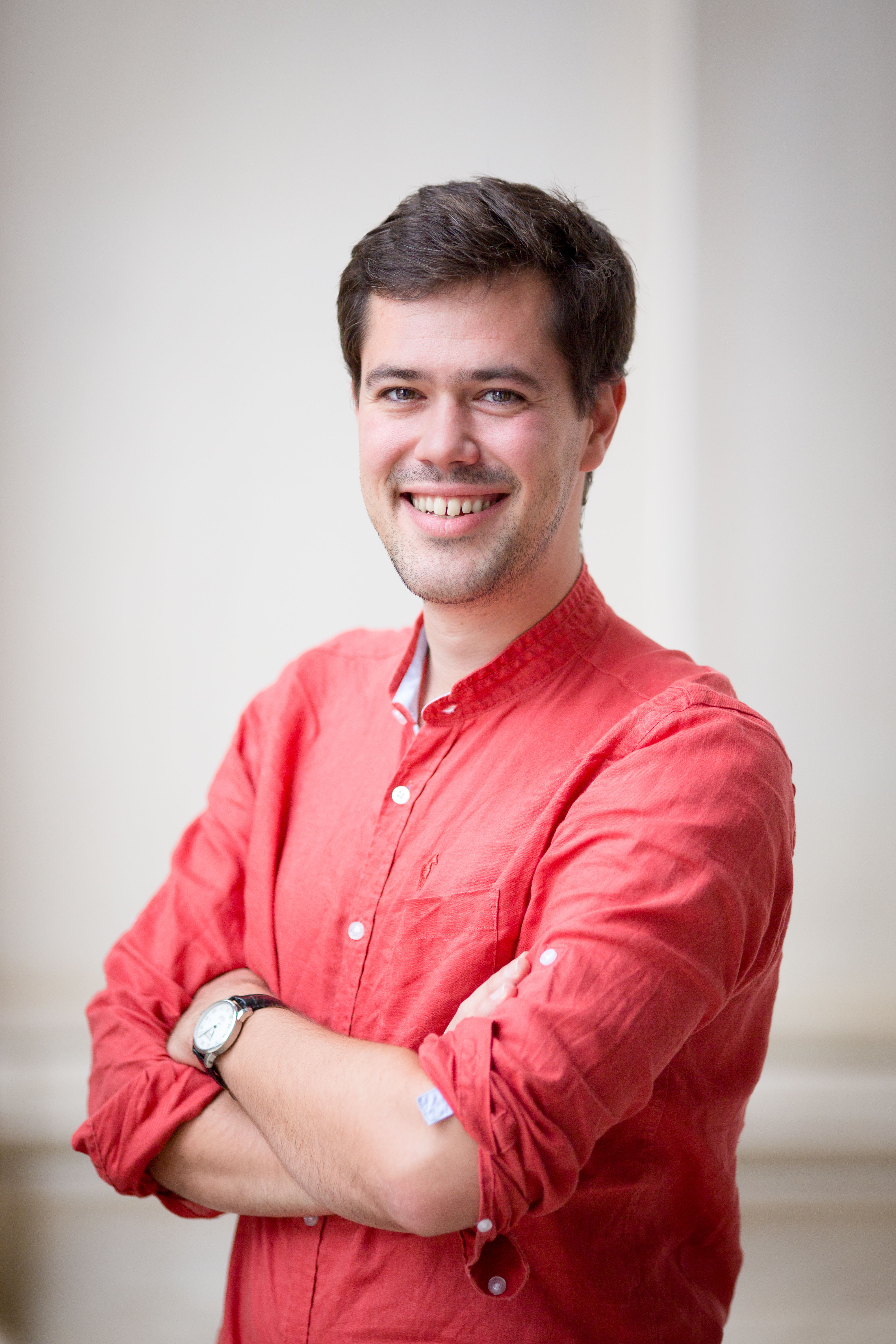
CUQI is a research project at DTU Compute, headed by Prof. Per Chr. Hansen.
It is financed by VILLUM Fonden (the Villum Foundation) through a
Villum Investigator grant of DKK 34,899,255.
The project runs from Sept. 1, 2019 to November 30, 2025.

What is CUQI
CUQI is a research project where we develop a mathematical, statistical and computational framework for applying uncertainty quantification to inverse problems. We also develop a software package for UQ modeling and computations, see below.
Uncertainty Quantification, or simply UQ, characterizes the sensitivity of a solution taking into account errors and inaccuracies in the data, models, etc.
Inverse Problems determine hidden information from measurements in, e.g., deconvolution, image deblurring, tomographic imaging, source reconstruction, and fault inspection.
As an example, engineers who use X-ray imaging to inspect an object for defects can characterize the reliability of every details in the image - thus aiding the interpretation and decision whether a crack is actually present.
Funding
Villum Fonden (the Villum Foundation) is one of Denmark's largest research funding foundations with annual grants of approx. DKK 500 million. Their aim is to foster research at the highest international level platformed at Danish universities and research institutions.
The Villum InvestIgator
The project is headed by Prof. Per Christian Hansen who specializes in numerical analysis, matrix computations, iterative methods, and computational methods for inverse problems.
His recent research projects were:
> High-Definition Tomography (HD-Tomo) funded by an ERC Advanced Research grant
> Improved Impedance Tomography with Hybrid Data, together with Prof. Kim Knudsen, funded by the Danish Council for Independent Research.
Per Christian Hansen is the (co-)author of five books, 120 papers and seven software packages. His research focuses on computational methods, e.g., for regularization methods, imaging, tomography, and subspace methods for signal processing.
All his activities comprise a combination of theoretical insights and computational methods.
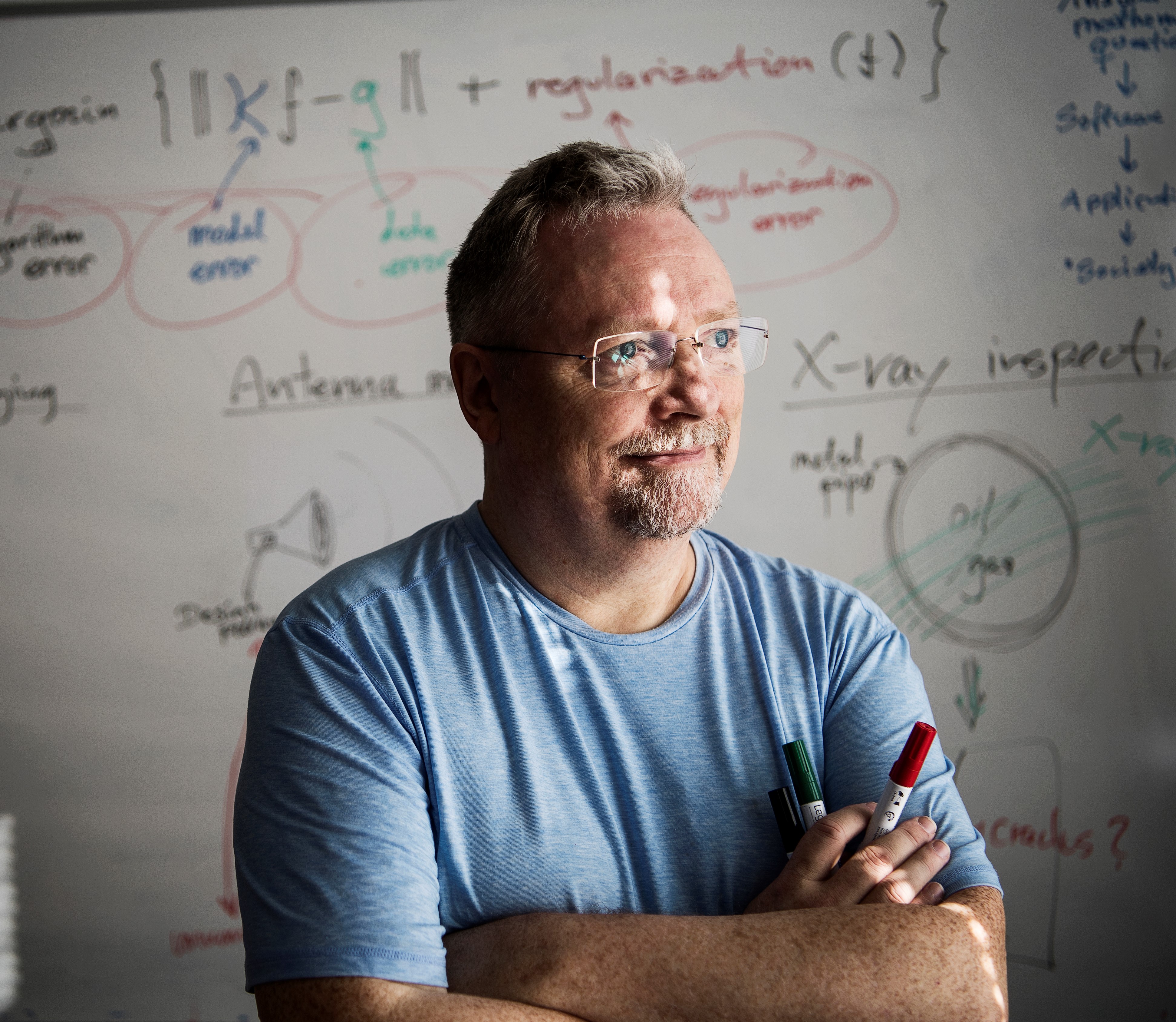
The Goal of the CUQI Project
Our research allows end-users of inverse problems, in science and engineering, to quantify the accuracy in their solutions, and in this way lower the risks and make more correct decisions.
We reach this goal by building general theoretical and computational foundations to quantify how model uncertainties, measurement noise, and other errors influence the solutions to inverse problems.
To do this we build on the solid mathematical and statistical foundation of uncertainty quantification. We also build a software package CUQIpy that allows experts and non-experts to apply UQ to their inverse problems, see below.
Based on our work, our aim is that UQ will become a natural part of solving inverse problems, in science and engineering.
Research
In inverse problems we operate with a very large number of unknowns (e.g., pixels, voxels) and the computational burden can be overwhelming. Also, UQ for inverse problems raises new fundamental scientific questions that we must identify, formulate and answer properly. Hence, we need research in both theory and computational methods.
Outcome
> The theoretical outcome is a mathematical and statistical basis for UQ studies of a range of inverse problems with different priors and noise models.
> The practical outcome is a modeling and computational platform – including an abstraction layer aimed at non-experts.
> The overall outcome is a framework to rigorously quantify the uncertainty of the solution’s details and identify the dominating types of errors.
Snapshots of CUQI research in 2023 and 2024
CUQI was well represented at the AIP 2023 conference in Göttingen, Sept. 4-8, where we co-organized 7 mini-symposia and gave 12 talks and one poster. The presentations, which are available on this page, give a good snapshot of our research activities in 2023.
We were also well represented at the SIAM UQ24 conference in Trieste, Feb. 27 - March 1, 2024, where we gave 5 talks and 3 posters. The presentations are available on this page.
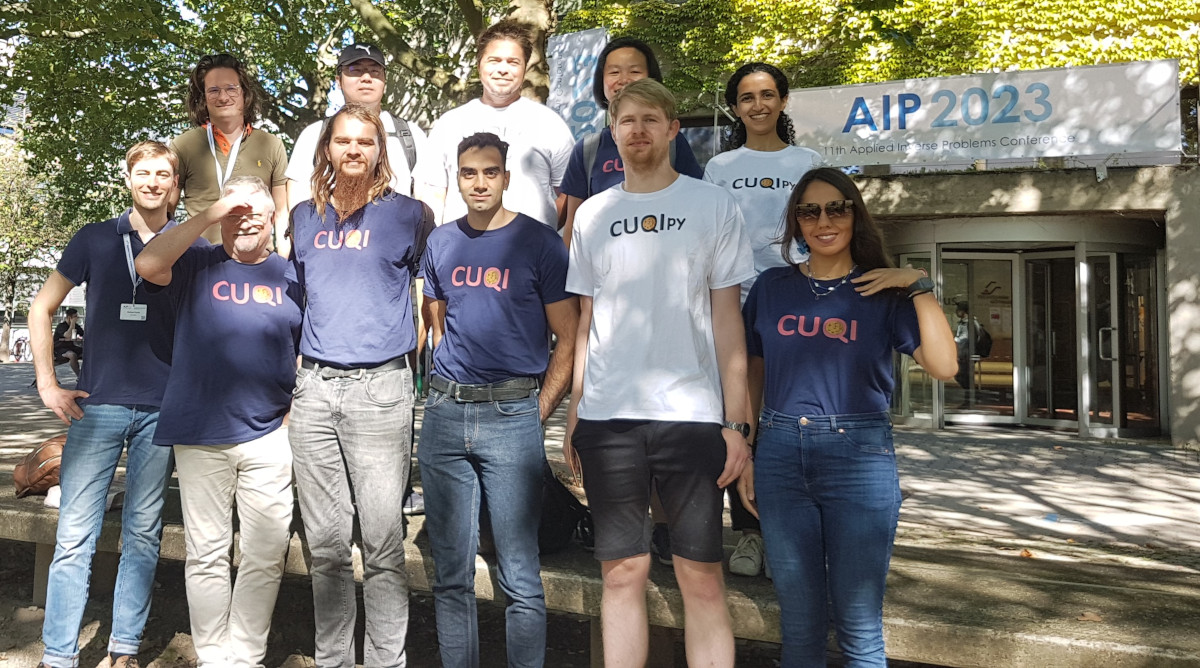

CUQIpy Software
To enable end-users to make use of our research, we release free open-source software that implements the theoretical and computational foundations developed during the project.
This is all released as part of the Python software package CUQIpy, which implements a computational abstraction layer for UQ studies of inverse problems aimed at non-experts. In addition to the main software we also host individual software from papers and projects under the CUQI GitHub organization, including a growing collection of plugins for CUQIpy.
Click these links to learn more about CUQIpy: documentation and GitHub.
We gave a training course Dec. 7-8, 2023; see Courses Etc below.
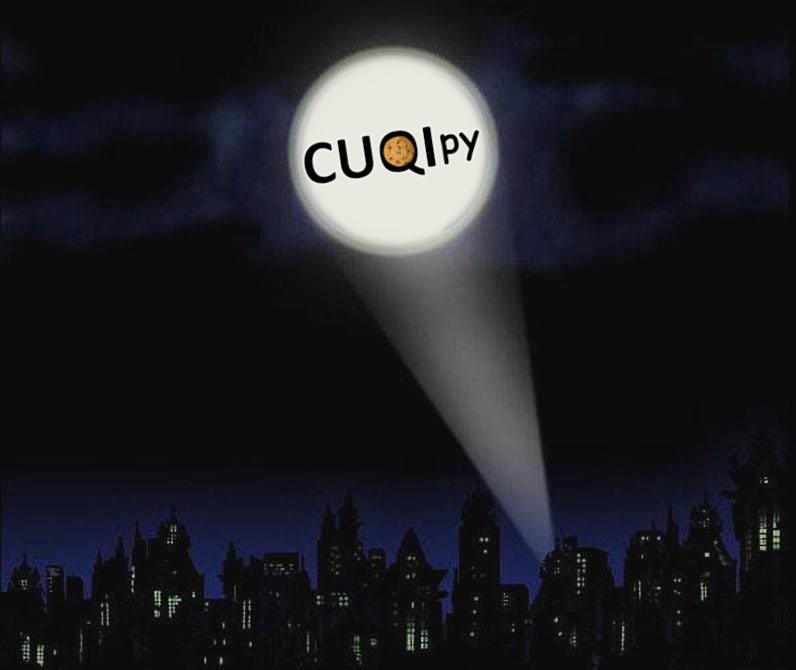

The picture shows the CUQIpy software team, as of Oct. 2023. From left to right: senior researcher Jakob S. Jørgensen, postdoc Nicolai A. B. Riis, postdoc Amal M. A. Alghamdi, and postdoc Chao "Charlie" Zhang.
Read more about the software in the CUQIpy papers Part 1 and Part 2, and on this link: Free software quantifies uncertainties in scans.
And here is a YouTube video with a presentation of CUQIpy, given by Amal M. A. Alghamdi at the Bayes@Lund workshop on Jan. 23, 2023.
Examples of our Research in CUQI
UQ provides a tool to assess the "quality" of a reconstruction - a solution to an inverse problem - with respect to the influence of errors. It tells us how much we can trust the reconstruction and its details. UQ is useful in science, engineering, medical imaging and many other applications where we solve an inverse problem to reveal hidden information. For example, we can apply it in industrial inspection when looking for anomalies or defects in an object, in medical imaging when looking for malignant tissue, and in acoustics when identifying the location of unwanted sound sources.
Below we illustrate our work on computational UQ for inverse problems with a few examples from ongoing research projects in CUQI. These examples illustrate various methodologies for implementing, applying and using UQ. For more details see the references in the list of publications below.
Many of these examples use our CUQIpy software mentioned above.
Bayesian Inference with Constraints
In many applications, the reconstruction must satisfy certain constraints, e.g., material densities are positive, image intensities are between 0 and 1, or the energy of a signal is bounded. Adding such prior information to a Bayesian model improves the meaningfulness of the resulting posterior distribution.
A common method to model constraints in a prior distribution is truncation: choose an unconstrained prior distribution and remove all probability outside of the constraint set. Another method is to reparametrize the signal, e.g., if the signal x is assumed to be positive, then it can be written as x = exp(z) and one can use an unconstrained prior distribution for z. These methods focus on the interior of the constraint set, but sometimes the signals of interest lie on the boundary of the constraint set.
As an alternative, one can first sample from an unconstrained posterior distribution and then apply a suitable projection onto a convex constraint set C. The resulting implicit posterior will consist of the original density in the interior of the constraint set, and a “lower-dimensional” distribution on the boundary, see the illustration below.


If the forward model is linear and both the likelihood and prior are Gaussian distributions, then the unconstrained sampling and projection can be done in a single step by repeatedly solving randomized constrained linear least square problems of the form
minx∈C || A x - bs ||22 + α || x - cs ||22 ,
where bs and cs are samples from suitable distributions. The solutions to these optimization problems will be samples of a projected posterior.

Consider the problem of deblurring a noisy 1D signal with prior knowledge that the signal lies in the interval [0,1]. The figure above shows the pointwise median and 99% credible interval for such a problem using no constraints (left), only the nonnegativity constraint (middle), and the box constraint (right). The projection framework significantly improves the quality of the median near the boundary.
This feature is now available in our CUQIpy software.
See the SIAM-ASA paper Everink, Dong & Andersen (2023).
The Horseshoe Prior for Edge-Preserving Reconstruction
If we want to reconstruct an image with sharp edges, we can use a Cauchy or Laplace distribution of the difference between neighbor pixels as the prior (this is related to total variation regularization). Unfortunately, these priors are computationally demanding. As a computationally attractive alternative, we can use a so-called horseshoe prior that resembles the Cauchy and Laplace priors - see the figure below where the horseshoe prior's density is guaranteed to lie in the shaded band.
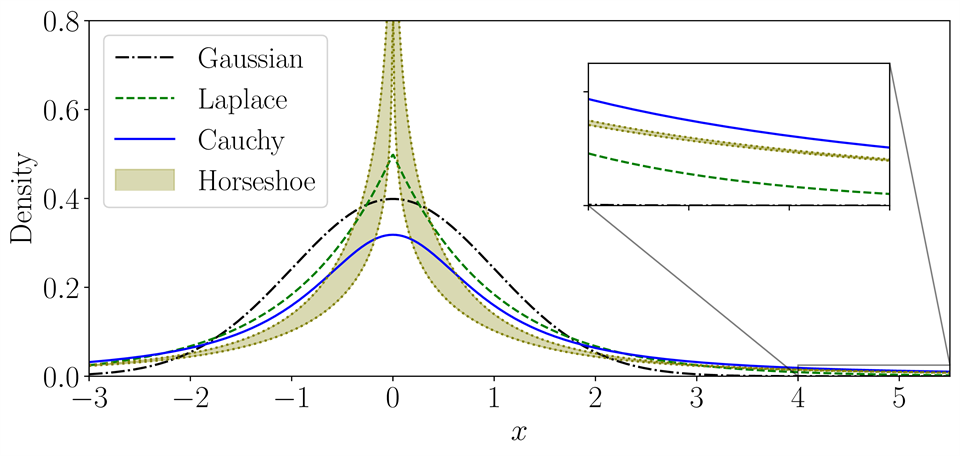
The main advantage of the horseshoe prior is that it imposes a conditionally Gaussian distribution on the differences, which allows more efficient computations because Gaussians can be handled with efficient least-squares methods. The difficulty is that the horseshoe prior has hyperpriors with heavy tails, and to alleviate this issue we propose an extended horseshoe prior that uses a scale-mixture representation of the heavy-tailed hyperpriors.
For the posterior, we exploit the extended horseshoe prior to compute conditional distributions for the associated parameters that can be sampled in closed form due to conjugacy. This allows the application of a Gibbs sampler.
Here we illustrate our method with a 1D deconvolution problem for two different noise levels, and we compare with posterior statistics obtained with a Laplace-difference prior proposed by Uribe, Bardsley, Dong, Hansen & Riis (2022). Compared to the Laplace-difference prior, we see that the horseshoe prior gives a sharper posterior (dotted lines) and a lower posterior uncertainty (the shaded area shows the 95% credibility interval). The solid line shows the ground truth.
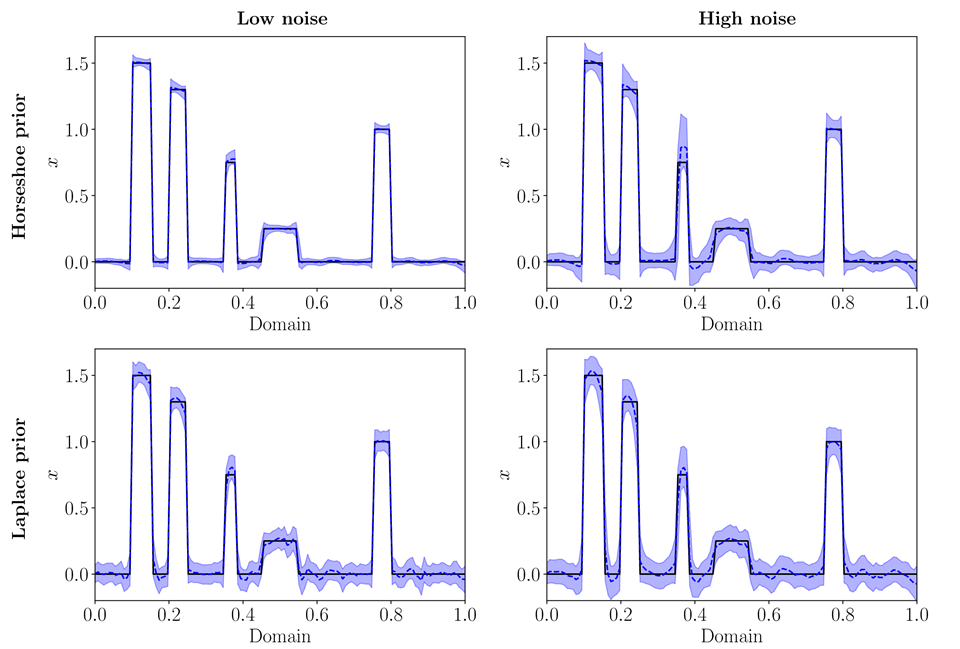
The horseshoe prior originated in the statistical community, and here we introduce it in the setting of Bayesian inverse problem - see the paper by Uribe, Dong & Hansen (2023).
Boundary Detection in X-Ray CT Applications
In 2D CT, every X-ray going through the object is characterized by its slope θ with the horizontal axis. In practice, a full-angle geometry where θ covers the entire interval [0,π) is not always possible. This could be due to obstacles in the CT measurement setup or to avoid unhealthy levels of radiation exposure. In such cases, a limited-angle geometry is needed, i.e., θ belongs to the reduced interval [0,θmax) with θmax ≪ π. In such a setup, the quality of reconstructed image is compromised when conventional reconstruction methods are applied.
In many X-ray CT applications, the boundaries of objects - as well as their roughness - contain valuable information, e.g., to differentiate between benign and malignant tumors. Confidence in estimating such features helps with an accurate diagnosis and designing an effective treatment plan. A common approach in detecting boundaries is via an image segmentation post-processing step, but the quality of the estimated boundaries is compromised in the limited-angel case.
We provide a novel goal-oriented, Bayesian framework for the limited-angel CT problem, in which we reconstruct the boundaries directly from the data without the need for reconstructing the image. Moreover, we quantify the uncertainty of the boundaries and their roughness. This approach avoids error propagation and reduces the dimensionality of the problem from finding a 2D image to a 1D boundary of a region.
Our key ingredient is a hierarchical Bayesian approach to estimating the roughness of a scalar function, based on a Whittle-Matérn covariance prior and the level of fractional differentiability. We also developed an efficient FFT-based computational method for implementing this. Numerical results indicate that this framework is a promising and effective tool for solving a broad range of inverse problems where the regularity of functions carries critical information.
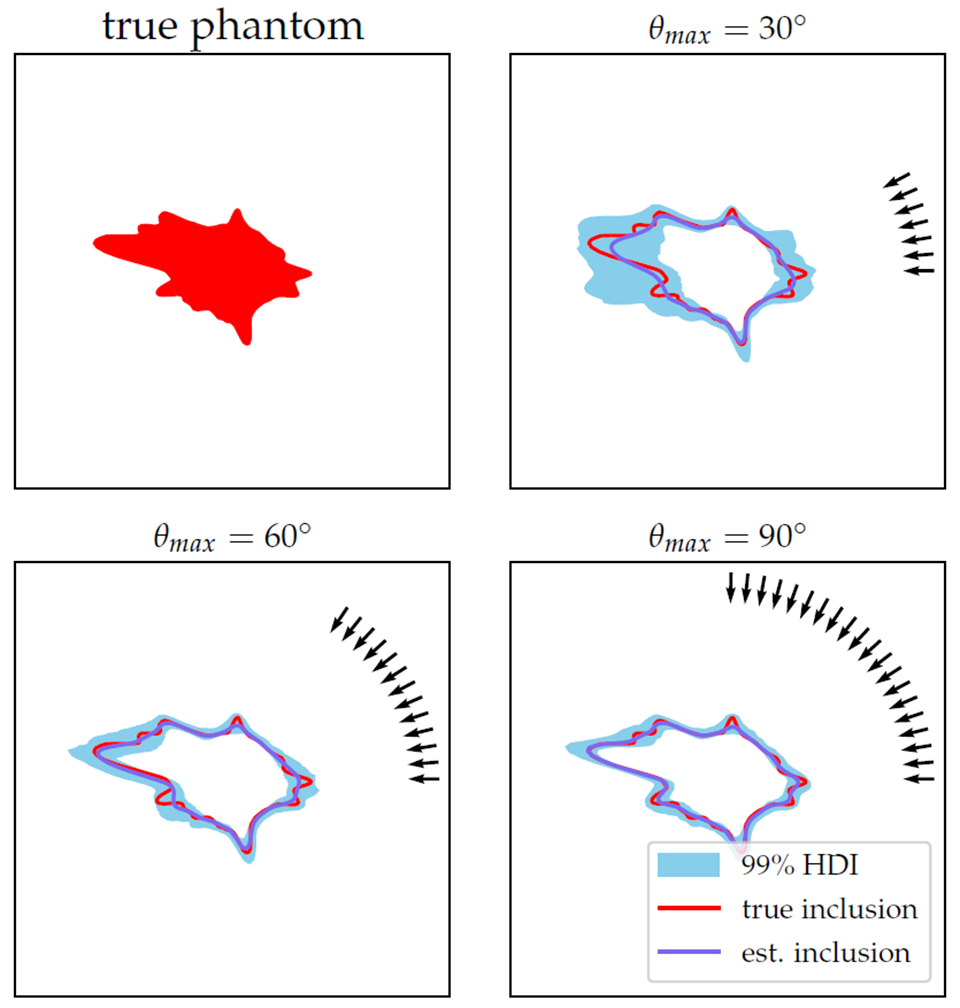
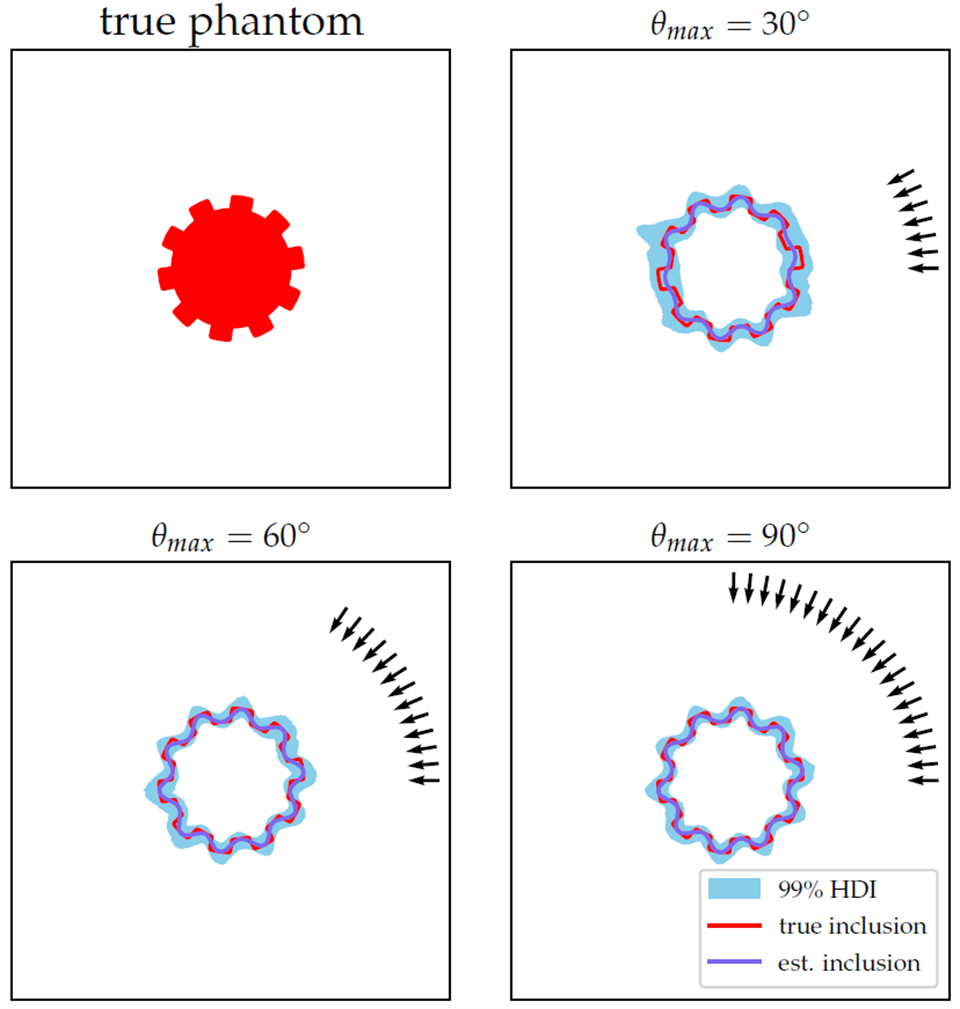
The above plots show the performance of our method in estimating the boundaries of an object in the limited-angle setup with different θmax. The arrows indicate the angles of the X-rays and thus region of the limited-angle interval [0, θmax). The estimated boundaries are shown in dark blue color, and the light blue region indicates the uncertainty in this estimation. The smaller the θmax the larger the uncertainty region - which is consistent with the results from microlocal analysis.
For more details, see the SIAM/ASA paper by Afkham, Dong & Hansen (2023). A related paper by Afkham, Riis, Dong & Hansen is submitted.
Defect Detection in X-Ray CT of Subsea Pipes
X-ray computed tomography (CT) is used to monitor the condition of subsea oil or gas pipes in operation, in order to detect defects that might cause leaks. In this example, we use data obtained in the test facilities at FORCE Technology. Computations are done with our CUQIpy software which draws upon the Core Imaging Library (CIL) for the CT models.
We formulate a Bayesian inverse problem with built-in defect detection. The goal is to detect defects and quantify their uncertainties. We express the CT problem as y = A (x+d) + e, where y is the measured X-ray absorption, e is data noise, and A is the linear forward model representing the physics and geometry of the measurements. We use a novel representation x + d of the unknown image to be reconstructed, expressed as a sum of two images; x contains the pipe structure and d contains potential defects.
In the Bayesian setting we formulate the joint posterior distribution p(x,d | y) ∝ p(y | x,d) p(x) p(d), where p(x,d | y) is the joint posterior distribution representing the solution to the CT problem, p(y | x,d) is the likelihood that represents the data misfit, while p(x) and p(d) are prior distributions representing any knowledge we have about the unknown images.

We impose priors that promote the structures we are looking for. For the pipe structure x, we use the structural Gaussian prior proposed by Christensen, Riis, Uribe & Jørgensen (2023). The above figure shows a sample from this prior which promotes the known layered pipe structure. We expect small and few defects, and therefore we impose a prior that promotes both sparsity and correlation (a gamma Markov random field) in the defect image d as described in the paper by Christensen, Riis, Pereyra & Jørgensen (2023). We explore the conditional posterior distributions p(x | y,d) and p(d | y,x) using Gibbs sampling.

The figure above shows the means of the x-samples (left), the d-samples (middle), and their sum with annotation (right). These results indicate that our methodology has successfully separated the defects from the overall pipe structure. In the figure below we zoom-in on the defect reconstruction d for the annotated defects indicated in the figure above, for further investigation of these defects. The figure shows the mean of the posterior samples, as well as related UQ in the form of the standard deviation of the samples. Engineers can use these results to identify critical defects in the subsea pipes.
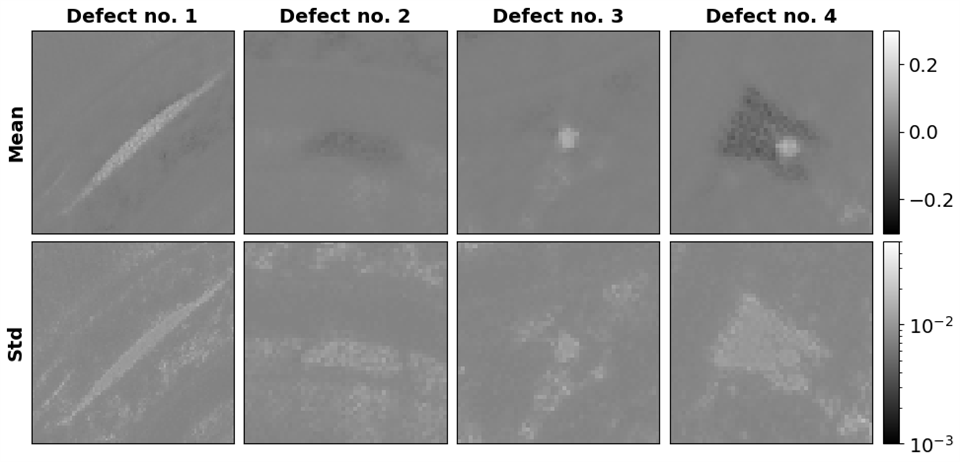
This is joint work with Prof. Marcelo Pereyra from Heriot-Watt University. The example was created by PhD student Silja L. Christensen.
UQ with Nonnegativity Constraints
Nonnegativity constraints appear in many applications where the underlying physics dictates that the solution cannot be negative. This is the case, e.g., for absorption coefficients in computed tomography, image intensities in astronomical imaging, and wave velocities in seismic travel-time tomography. Hence, nonnegativity constraints are very important for producing meaningful reconstructions.
We considers computational aspects of UQ with nonnegativity constraints x ≥ 0. If we replace the nonnegativity constraint with a positivity constraint, x > 0, then we can handle this constraint within the "standard" UQ framework with a transformation of variables x = exp(z). In this work we specifically address situations where we expect the existence of zero elements in the solution – in fact, in some imaging problems a substantial fraction of the solution's elements/pixels may be zero. Therefore we use a nonnegative Gaussian distribution.

The above figure shows a simple Gauss distribution (left), a truncated Gauss distribution with zero probability for x = 0 (middle), and a nonnegative Gaussian distribution with nonzero probability for x = 0 (right).
We use a Markov chain Monte Carlo (MCMC) method to sample the posterior with constraints, and we refer to our method as a Nonnegative Hierarchical Gibbs Sampler.

We applied our computational method to positron emission tomography (PET), where a radioactive tracer element is injected into a body and exhibits radioactive decay, resulting in photon emission. The emitted photons that leave the body are recorded by a photon detector, and the resulting mathematical reconstruction problem is equivalent to a classical X-ray CT problem. The above figure shows our simulation results.
- Top left: the mean of the computed image samples from our nonnegative hierarchical Gibbs sampler.
- Bottom left: histogram of the regularization parameters produced by the sampler.
- Top right: the MAP estimate using the mean of the regularization parameters.
- The pixel-wise standard deviations from the sampler. As expected, image pixels with higher intensity also have higher variance.
For details see the paper by Bardsley & Hansen (2020).
The Bayesian Approach to Inverse Robin Problems
Ice-sheet models are important components of long-term sea level predictions. A crucial model parameter is the basal drag coefficient, which is a spatially varying parameter that models the slipperiness of the lubricating sediment beneath the ice.

The ice flow can be modeled by a Stokes system of partial differential equations, where the basal drag coefficient β enters in a Robin boundary condition on the bottom part of the ice boundary. On the surface of the ice, we make N observations Yi of the ice velocities at locations Xi picked uniformly at random:
Yi = u(Xi) + εi , i = 1,...,N .
Here, u is the ice velocity that depends on β and εi is Gaussian noise. Estimation of β is a nonlinear and severely ill-posed inverse problem known as an inverse Robin problem.
From a mathematical point of view little is known about the reliability of the Bayesian approach for such nonlinear inverse problems. But if we use Gaussian priors with a favorable covariance structure then more can be said. As an example, consider two Gaussian priors suited for estimating β on the interval [0,1]: the Matérn prior and the squared-exponential Gaussian prior, samples of which are shown below.
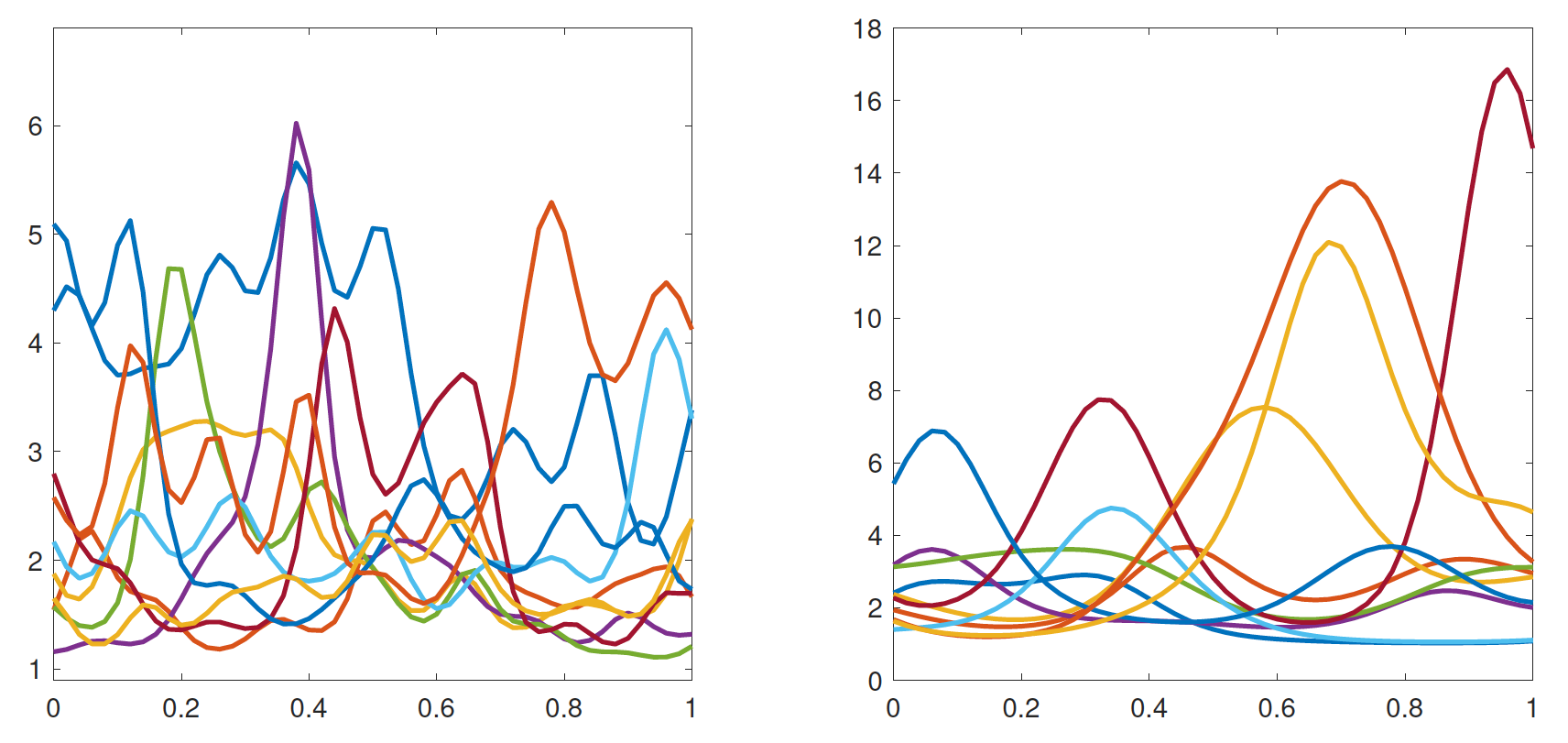
For these two choices of priors, we can guarantee that the Bayesian approach is reliable when applied to a simplified inverse Robin problem. If the ground truth β is Sobolev regular of some index, then the posterior mean from a suitable Matérn prior converges to β (in prob.) at a logarithmic rate as N → ∞. Similarly, if β is analytic (very smooth) then we have convergence for the squared-exponential prior at rate N−σ as N → ∞.
The figure below shows the ground truth, the conditional mean, and samples from the posterior using the Matérn prior (top) and the squared-exponential prior (bottom). We see that there is less uncertainty for the latter prior in this example.

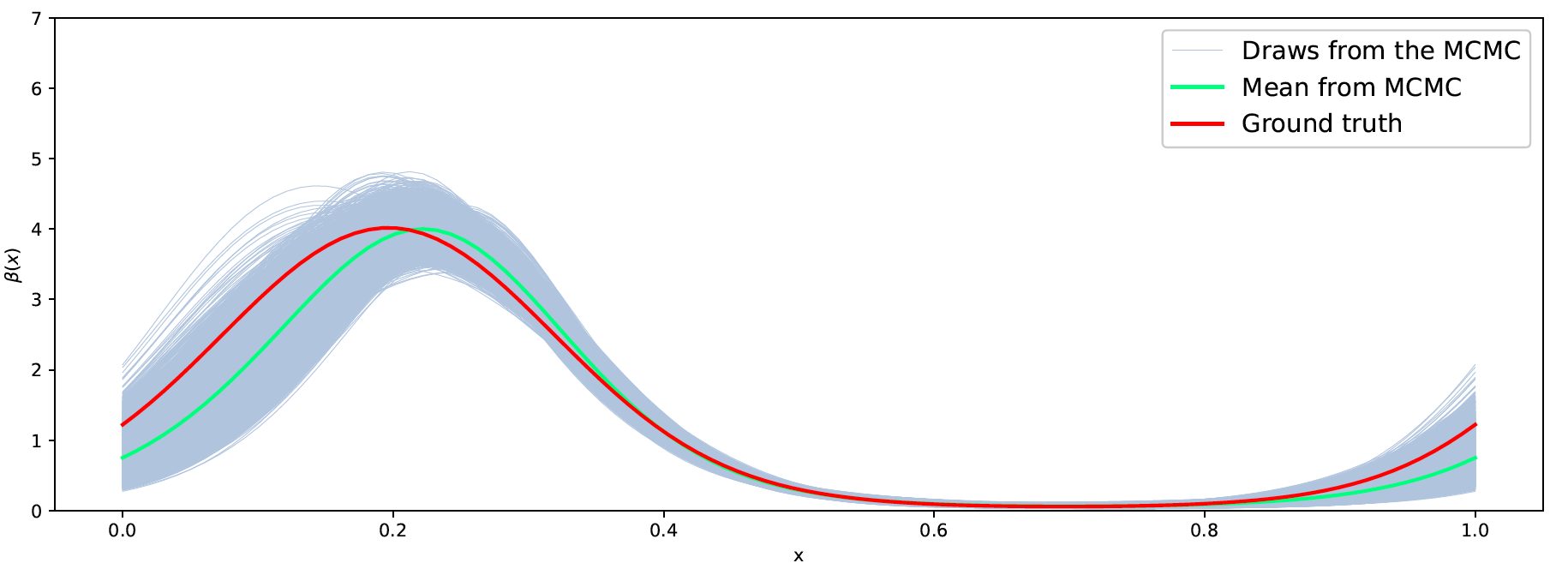
This work was carried out by PhD student Aksel Kaastrup Rasmussen and it is documented in the paper with Seizilles, Girolami & Kazlauskaite (2023). Software is available as a CUQIpy notebook.
The Team
All members of the CUQI team are associated with the Section for Scientific Computing at DTU Compute.
Permanent Team Members

Martin Skovgaard Andersen Associate Professor mskan@dtu.dk
Yiqiu Dong Associate Professor yido@dtu.dk
Specialist in noise modeling and computational methods for image processing.
Per Christian Hansen Professor pcha@dtu.dk
Specialist in numerical analysis, iterative solvers, and computational methods for inverse problems.
Jakob Sauer Jørgensen Senior Researcher jakj@dtu.dk
Mirza Karamehmedovic Associate Professor mika@dtu.dk
Kim Knudsen Professor kiknu@dtu.dk
Specialist in coupled-physics modeling, PDE-constrained optimization, functional analysis and electrical impedance tomography.
Dorte Olesen Consultant doole@dtu.dk
Executive advisor and project coordinator.
Anette Iversen Administrative Coordinator anive@dtu.dk
Project secretary.
Postdocs
Babak Maboudi Afkham Postdoc bmaaf@dtu.dk
Project: goal-oriented uncertainty quantification.
Amal Mohammed A Alghamdi Postdoc amaal@dtu.dk
Project: computational UQ for PDE problems.
Rémi Laumont Postdoc real@dtu.dk
Project: machine learning and UQ for inverse problems.
Project: efficient and flexible computational methods.
Chao Zhang Postdoc chaz@dtu.dk
Former Postdocs

Project: non-Gaussian priors.
Now with LUT University, Finland; homepage.
PhD Students
Silja Westphal Christensen PhD student swech@dtu.dk
Project: UQ for tomographic reconstruction.
Jasper Marijn Everink PhD student jmev@dtu.dk
Rafael Flock PhD student raff@dtu.dk
Andreas Horst PhD student ahor@dtu.dk
Former PhD Students
Sept. 1, 2019 to June 30, 2023 (incl. parental leave).
Project: prior modeling in computational UQ for inverse problems.
Katrine is now a Senior Modelling Scientist with Novo Nordisk Research & Development.
Sept. 1, 2020 to Aug. 31, 2023.
Project: computational UQ of hybrid inverse problems.
Aksel was a research assistant in CUQI November-December 2023. He is now a Senior Biostatistician with H. Lundbeck A/S.
Puyuan Mi
Nov. 1, 2021 to Jan. 31, 2024.
Project: model error reduction in inverse problems.
Puyuan stopped before getting his degree.
Kristoffer Linder-Steinlein PhD student krlin@dtu.dk
Project: UQ for source localization and passive imaging in random media.
Kristoffer is now postdoc in the Villum Experiment project neXt-Ray: a super-resolution light engine
.
Collaborators
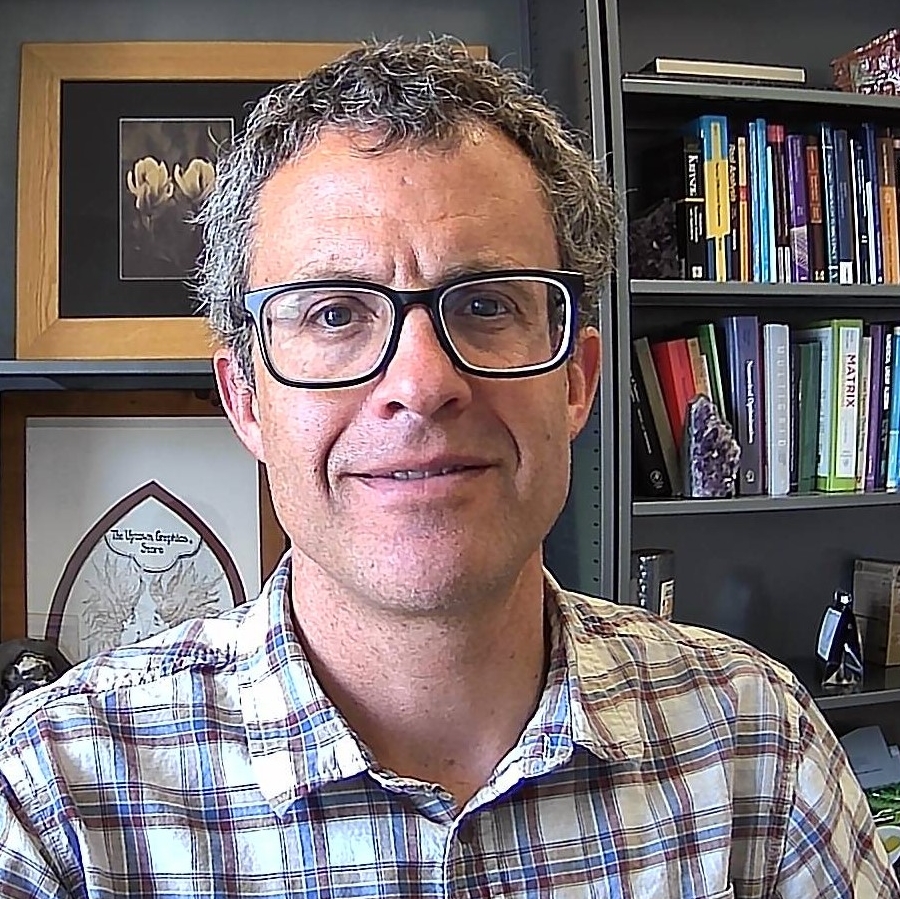
Professor Johnathan M. Bardsley, Department of Mathematical Sciences, University of Montana - specialist in computational methods for inverse problems and uncertainty quantification.
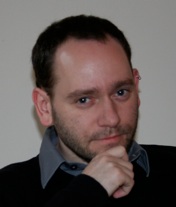
Associate Professor Matthias Chung, Department of Mathematics, Emory University - specialist in computational inverse problems, data analytics & learning, uncertainty quantification, and numerical optimization.

Professor Bangti Jin, Department of Mathematics, Chinese University of Hong Kong - specialist in theory and algorithms for inverse and ill-posed problems.
Jakob Lemvig Associate Professor jakle@dtu.dk

Professor Marcelo Pereyra, Maxwell Institute for Mathematical Science and School of Mathematical and Computer Sciences, Heriot-Watt University - specialist in statistical, analytical and machine-learning paradigms.
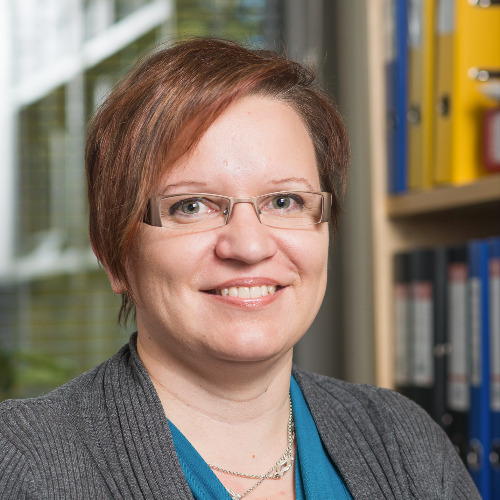
Professor Tanja Tarvainen, Department of Applied Physics, University of Eastern Finland - specialist in computational methods for inverse problems and uncertainty quantification in imaging applications
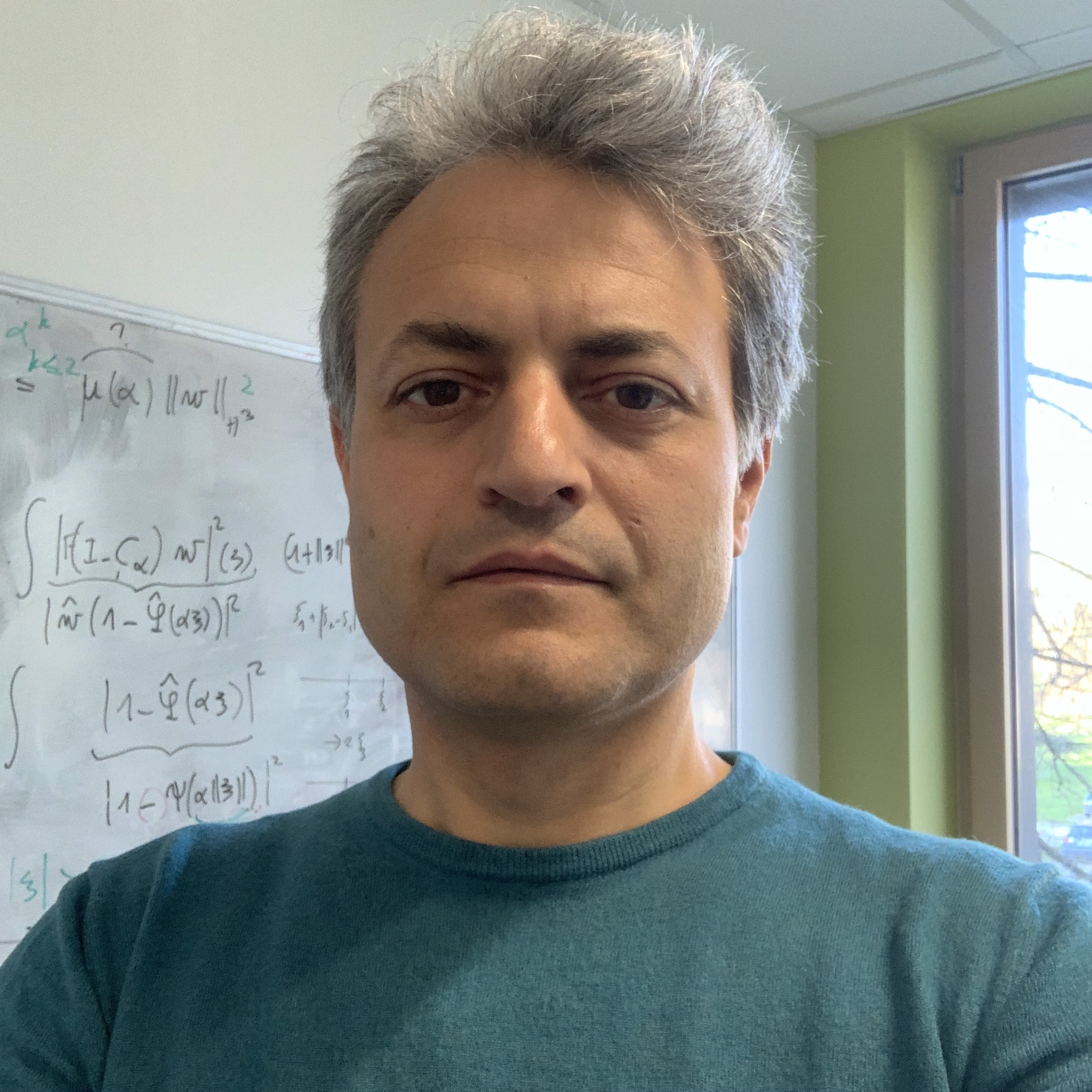
Research Professor Faouzi Triki, Laboratoire Jean Kuntzman, Grenoble-Alpes University - specialist in inverse problems and mathematical modeling in optics.

Postdoc Felipe Uribe, LUT University - specialist in applied probability & statistics, and large-scale sampling methods.
Courses, Workshops, Training and Other Activities
Workshop: UQ for Inverse Problems and Imaging (UQIPI24)
September 16-20, 2024 @ ICMS, Bayes Centre, Edinburgh
Organizers: Per Christian Hansen, Marcelo Pereyra, and Yiqiu Dong. Link to workshop homepage: UQIPI24.
![]()
This workshop will bring together specialists in UQ for inverse problems and imaging, and we invite talks related to the development of theory, methodology, and software. We also invite talks about interesting applications of UQ in imaging. The goal is to stimulate networking and collaboration between researchers and students in these areas, and to present state-of-the-art research results.
Plenary Speakers
- Yoann Altmann, Heriot-Watt University
- Tatiana Bubba, University of Bath
- Per Christian Hansen, Technical University of Denmark
- Aku Seppänen, University of Eastern Finland
- Julián Tachella, CNRS and ENS de Lyon
- Faouzi Triki, Grenoble-Alpes University
CUQIpy Software Training Course
As part of the workshop, we give a training course on our CUQIpy software, which includes hands-on tutorials (bring your laptop!) with examples from image deblurring, X-ray CT, and inverse problems based on partial differential equations. Half of the course is devoted to working on a small use-case with CUQIpy, and participants are encouraged to bring their own case and data.
Participation and Registration
Participation in presence only. You can apply to attend using the link on the workshop homepage. Please fill in the form before 20th May 2024 otherwise your application will not be reviewed. All applicants will be contacted by ICMS before the end of May regarding the application result.
Please note if your application is successful, you will need to pay £200.00 registration fee to attend this workshop. You can apply for the reduced rate (£100.00) if you are an Early Career Researcher or a PhD student.
Programme
![]()
Past Activities
Third Place in the Kuopio Tomography Challenge 2023
December 15, 2023 @ LUT University
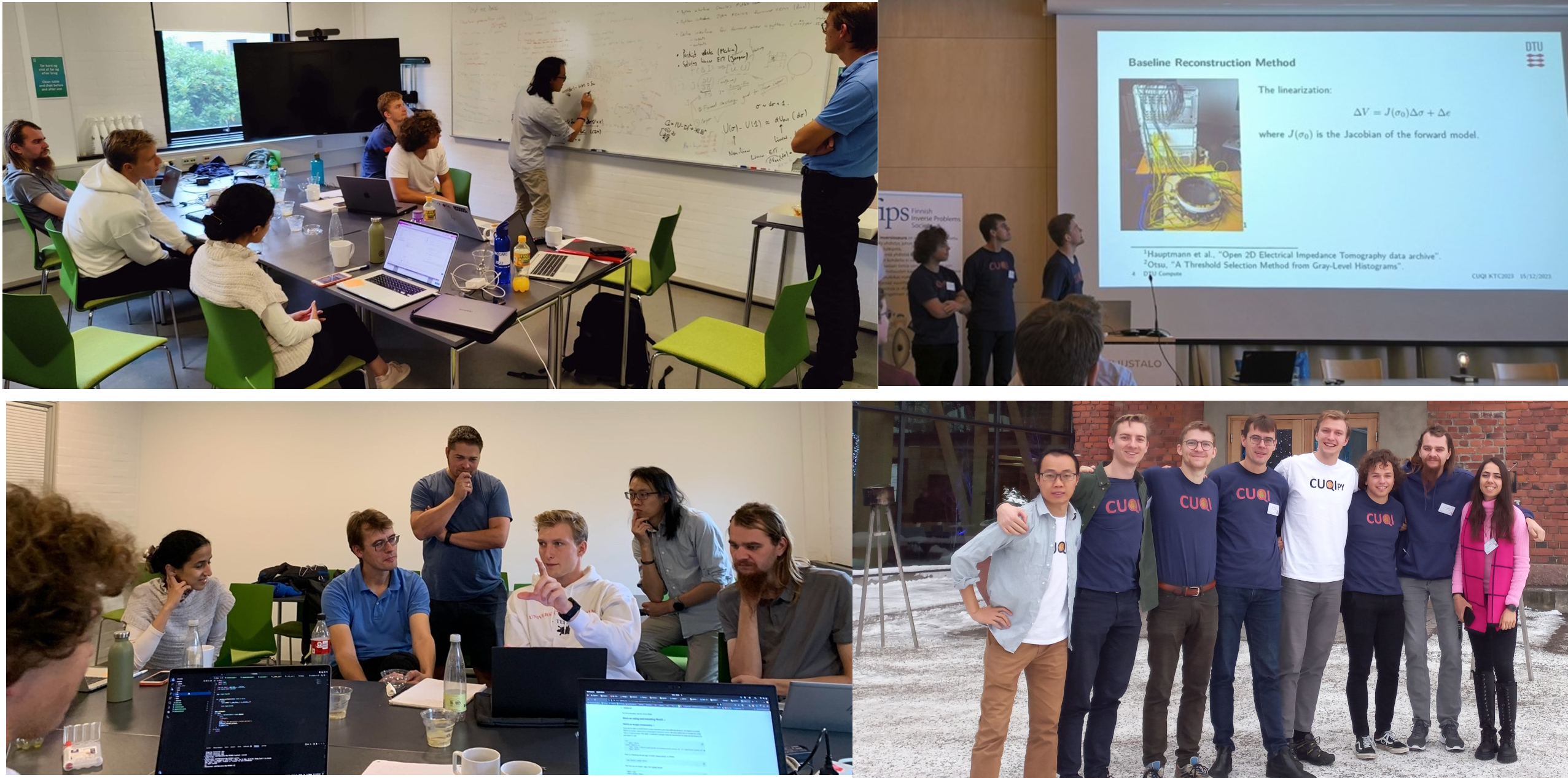
Team CUQI won third place in the international Kuopio Tomography Challenge 2023, which provides real electric impedance tomography data and asks participants to develop the best numerical methods to reconstruct the probed conductivity field. The team consists of three DTU master’s students Martin S. Carøe, Jakob T. K. Nielsen, and Rasmus K. H. Sørensen, plus CUQI project members Jasper Everink, Aksel Kaastrup Rasmussen, Amal Alghamdi, Chao Zhang, Jakob Sauer Jørgensen, and Kim Knudsen.
Team CUQI submitted several methods including spatially dependent regularization, level-set method, and non-linear optimization, in conjunction with Otsu and Chan-Vese segmentation methods. They scored the highest among the teams that did not rely on machine learning solutions. The team presented their work during the Inverse Days 2023 conference at LUT University in Lahti, Finland. The submissions are on CUQI's GitHub in KTC2023-CUQI1 to KTC2023-CUQI9. We acknowledge support from CUQI and the Danish Data Science Academy.
CUQIpy Training Course
December 7-8, 2023 @ DTU

We held a two-day training course at DTU, with 30 participants, aimed at introducing the CUQIpy software to new users. After a brief introduction to UQ for inverse problems, we described the CUQIpy interface that allows users to easily model and analyze linear and nonlinear inverse problems. This was followed by computer exercises and work on a small project. The program, course material, etc. is available at this link.
Talk: Per Christian Hansen - Edge-Preserving Computed Tomography (CT) with Uncertain View Angles
Professor Per Christian Hansen gave an invited to talk on Feb. 7, 2023 in the online seminar series MATH4UQ organized by RWTH Aachen University. Here are the slides and a YouTube video.
Workshop: Imaging with Uncertainty Quantification (IUQ22)
September 27-29, 2022 @ Helsingør, Denmark



This workshop brought together specialists in UQ for imaging, and the talks covered various aspects related to the development of theory, methodology and software, as well as applications of UQ in imaging. The goal was to stimulate networking and collaboration between researchers and students in these areas.
Before the workshop, we arranged a 1-day short course devoted to the Python software CUQIpy that we are currently developing for modeling and computations related to UQ for imaging.
For more details about the workshop, go to the IUQ22 Workshop homepage.
Talk: Felipe Uribe - Bayesian Inverse Problems
Postdoc Felipe Uribe was invited to talk about Bayesian inverse problems at the "Summer School on Recent Advancements in Computational and Learning Methods for Inverse Problems" (CLIP22), July 11–15: https://bugs.unica.it/cana/clip22/
Talk: Jakob Sauer Jørgensen - CUQIpy
Senior researcher Jakob Sauer Jørgensen was invited to talk about the software package CUQIpy at the "CIMPA Summer School 2022 Mathematical Methods in Data Analysis", July 18–29: https://sites.google.com/view/mathschoolinalbania/
PhD course: Introduction to Uncertainty Quantification for Inverse Problems
January 2022 @ DTU
This course introduces state-of-the-art numerical methods for quantification and reduction of uncertainties in computational models. UQ is paramount to enhance analysis and prediction tasks in multiple applications such as tomography, material science, spatial statistics, reliability, etc. Therefore, the course can be of interest to students from any discipline in applied mathematics and engineering. The course provides the mathematical background for theory and methods of UQ, which are illustrated via Python exercises. We will also cover the use of the software package CUQIpy for performing UQ analysis.
Ects: 5.
Time: January 3–22, 2022 (3 week period at DTU). Next time: June 2024.
Course responsible: Associate Professor Yiqiu Dong, DTU Compute.
More details: Link to DTU's course description, course no. 02975.
PhD course: Bayesian Scientific Computing
December 2019 @ DTU
The lectures focus on basic techniques in Bayesian methods, including probability distributions, Bayes' formula, conditioning, hierarchical models, estimation problems arising in this context, as well as certain numerical techniques for inverse problems, including regularization and iterative methods for solving large systems. The course is based on the book: D. Calvetti and E. Somersalo, Introduction to Bayesian Scientific Computing, Springer, 2007, as well as a new edition of it.
Time: December 9-13, 2019 (one full week).
Teachers: Professor Daniela Calvetti and Professor Erkki Somersalo, both from Case Western Reserve University, Cleveland, Ohio.
Course responsible: Professor Per Christian Hansen, DTU.
Workshop: Uncertainty Quantification for Inverse Problems
December 17-18, 2018 @ DTU
The goal of this workshop was to give the participants an introduction to the central ideas and computational methods for uncertainty quantification, with a focus on its application to inverse problems, and with illustrations from applications. The workshop is aimed at newcomers in the field, but more experienced user will also benefit from the presentations. Workshop homepage with slides etc.
Internships
Our summer internships give master students a unique opportunity to build on their skills, and to obtain experience with research in computational methods and applications of uncertain quantification to inverse problems.
In 2024 we offer multiple internships related to benchmarking of the sampling methods in our CUQIpy software.
- Start time: August 1, 2024.
- Duration: 1, 2 or 3 months.
- Deadline for application: June 1, 2024.
Send you application to Jakob Sauer Jørgensen, Senior Researcher, jakj@dtu.dk
Our interns
2022. Louis Poulain-Auzéau from EPFL, Switzerland: Neural networks for acoustic and electromagnetic field control.
Currently doing a MSc project at EPFL and UNIL on weather forecasting.
2023. Marco Ratto, Università de Cagliari, Italy: Implementation of fast convolution algorithms in CUQIpy. Currently a PhD student at Università dell'Insubria in Como.
PUBLICATIONS
Here we list submitted and published papers produced in the CUQI project.
- B. M. Afkham, J. Chung, and M. Chung, Learning regularization parameters of inverse problems via deep neural networks, Inverse Problems, 37 (2021), 105017, doi 10.1088/1361-6420/ac245d.
- B. M. Afkham, J. Chung, and M. Chung, Goal-oriented uncertainty quantification for inverse problems via variational encoder-decoder networks, submitted, arxiv.org/abs/2304.08324.
- B. M. Afkham, Y. Dong, and P. C. Hansen, Uncertainty quantification of inclusion boundaries in the context of X-ray tomography, SIAM/ASA J. Uncertainty Quantification, 11 (2023), pp. 31-61, doi 10.1137/21M1433782.
- B. M Afkham, K. Knudsen, A. K. Rasmussen, and T. Tarvainen, A Bayesian approach for consistent reconstruction of inclusions, Inverse Problems, 40 (2024), 045004, doi 10.1088.1361-6420/ad2531 (open access).
- A. M. Afkham, N. A. B. Riis, Y. Dong, and P. C. Hansen, Inferring object boundaries and their roughness with uncertainty quantification, submitted, arxiv.org/abs/2305.04608.
- A. M. A. Alghamdi, P. Chen, and M. Karamehmedović, Optimal design of photonic nanojets under uncertainty, submitted, arxiv.org/abs/2209.02454.
- A. M. A. Alghamdi, M. A. Hesse, J. Chen, and O. Ghattas, Advancing aquifer characterization through the integration of satellite geodesy, geomechanics, and Bayesian inference, submitted to Proc. Natl. Acad. Sci.
- A. Alghamdi, N. A. B. Riis, B. M. Afkham, F. Uribe, S. L. Christensen, P. C. Hansen, and J. S. Jørgensen, CUQIpy – Part II: computational uncertainty quantification for PDE-based inverse problems in Python, Inverse Problems, doi 10.1088/1361-6420/ad22e8 (open access). See also Part I by N. A. B. Riis et al. below.
- E. Ametova, G. Burca, S. Chilingaryan, G. Fardell, J. S. Jørgensen, E. Papoutsellis, E. Pasca, R. Warr, M. Turner, W. R. B. Lionheart, and P. J. Withers, Crystalline phase discriminating neutron tomography using advanced reconstruction methods, J. Phys. D: Appl. Phys., 54 (2021), 325502, doi 10.1088/1361-6463/ac02f9 (open access).
- E. Ametova, G. Burca, G. Fardell, J. S. Jørgensen, E. Papoutsellis, E. Pasca, R. Warr, M. Turner, W. R. B. Lionheart, and P. J. Withers, Joint reconstruction with a correlative regularisation technique for multi-channel neutron tomography, Proc.16th International Meeting on Fully 3D Image Reconstruction in Radiology and Nuclear Medicine, pp. 431–434 (2021), no doi; arxiv.org/abs/2110.04143.
- K. O. Bangsgaard and M. S. Andersen, A statistical reconstruction model for absorption CT with source uncertainty, Inverse Problems, 37 (2021), 085009, doi 10.1088/1361-6420/ac11c7.
- K. O. Bangsgaard, M. Andersen, J. G. Heaf, and J. T. Ottesen, Bayesian parameter estimation for phosphate dynamics during hemodialysis, Math, Biosci. Eng., 20 (2022), pp. 4455–4492, doi 10.3934/mbe.2023207 (open access).
- K. O. Bangsgaard, G. Burc, E. Ametova, M. S. Andersen, and J. S. Jørgensen, Low-rank flat-field correction for artifact reduction in spectral computed tomography, Appl. Math. in Sci. Eng., 31 (2023), 2176000, doi 10.1080/27690911.2023.2176000 (open access).
- J. M. Bardsley and P. C. Hansen, MCMC algorithms for computational UQ of nonnegativity constrained linear inverse problems, SIAM J. Sci. Comput., 41 (2020), pp. A1269–1288, doi 10.1137/18M1234588.
- D. Caviedes-Nozal, F. M. Heuchel, J. Brunskog, N. A. B. Riis, and E. Fernandez-Grande, A Bayesian spherical harmonics source radiation model for sound field control, J. Acoust. Soc. Am., 146 (2019), pp. 3425–3435, doi 10.1121/1.5133384.
- D. Caviedes-Nozal, N. A. B. Riis, F. M. Heuchel, J. Brunskog, P. Gerstoft, and E. Fernandez-Grande, Gaussian processes for sound field reconstruction, J. Acoust. Soc. Amer., 140, 1107 (2021), doi 10.1121/10.0003497.
- D. Caviedes-Nozal, N. A. B. Riis, F. M. Heuchel, J. Brunskog, P. Gerstoft, and E. Fernandez-Grande, Acoustic Gaussian processes, J. Acoust. Soc. Am., 149 (2021), pp. 1107–1119, doi 10.1121/10.0003497.
- L. Chen, T. Chen, U. Detha, and M. S. Andersen, Towards scalable kernel-based regularized system identification, 2023 62nd IEEE Conference on Decision and Control (CDC), Singapore, Singapore, 2023, pp. 1498–1504, doi 10.1109/CDC49753.2023.10384051 (open access).
- S. L. Christensen, N. A. B. Riis, M. Pereyra, and J. S. Jørgensen, A Bayesian approach for CT reconstruction with defect detection for subsea pipelines, Inverse Problems, (2023), doi 10.1088/1361-6420/ad1348 (open access).
- S. L. Christensen, N. A. B. Riis, F. Uribe, and J. S. Jørgensen, Structural Gaussian priors for Bayesian CT reconstruction of subsea pipes, Appl. Math. in Sci. and Eng., 31 (2023), 2224918, doi 10.1080/27690911.2023.2224918 (open access).
- Y. Dong and M. Pragliola, Including sparsity via horseshoe prior in imaging problems, Inverse Problems, 39 (2023), 074001, doi 10.1088/1361-6420/acd851 (open access).
- Y. Dong, C. Wu, and S. Yan, A fast method for simultaneous reconstruction and segmentation in X-ray CT application, Inverse Problems in Science and Engineering, 29 (2021), 3342–3359, doi 10.1080.17415977.2021.1999941.
- J. M. Everink, Y. Dong, and M. S. Andersen, Sparse Bayesian inference with regularized Gaussian distributions, Inverse Problems, 39 (2023), 115004, doi 10.1088/1361-6420/acf9c5 (open access).
- J. M. Everink, Y. Dong, and M. S. Andersen, Bayesian inference with projected densities, SIAM/ASA J. UQ, 11 (2023), pp. 1025–1043, doi 10.1137/22M150695X.
- R. Flock, Y. Dong, F. Uribe, and O. Zahm, Certified coordinate selection for high-dimensional Bayesian inversion with Laplace prior, 2023, submitted to Statistics and Computing. Preprint at Research Square.
- P. C. Hansen, K. Hayami, and K. Morikuni, GMRES methods for tomographic reconstruction with an unmatched back projector, J. Comp. Appl. Math., 413 (2022), 114352, doi 10.1016/j.cam.2022.114352 (open access).
- P. C. Hansen, J. S. Jørgensen, and W. R. B. Lionheart (Eds.), Computed Tomography: Algorithms, Insight, and Just Enough Theory, SIAM, PA, 2021; doi 10.1137/1.9781611976670.
- P. C. Hansen, J. S. Jørgensen, and P. W. Rasmussen, Stopping rules for algebraic iterative reconstruction methods in computed tomography; in 21st International Conference on Computational Science and Its Applications (ICCSA), IEEE (2021), pp. 60–70, doi 10.1109/ICCSA54496.2021.00019.
- B. C. S. Jensen, A. Engsig-Karup, and K. Knudsen, Efficient uncertainty quantification and variance-based sensitivity analysis in epidemic modeling using polynomial chaos, Math. Model. Nat. Phenom., 17, article no. 8 (2022); doi1 10.1051/mmnp/2022014 (open access).
- B. C. S. Jensen and K. Knudsen, Sound speed uncertainty in acousto-electric tomography, Inverse Problems, 37 (2021), 125011, doi 10.1088/1361-6420/ac37f8.
- B. C. S. Jensen, K. Knudsen, and H. Schlüter, Conductivity reconstruction from power density data in limited view, Mathematica Scandinavia, 129 (2023), doi 10.7146/math.scand.a-135820.
- J. S. Jørgensen, E. Ametova, G. Burca, G. Fardell, E. Papoutsellis, E. Pasca, K. Thielemans, M. Turner, R. Warr, W. R. B. Lionheart, and P. J. Withers, Core Imaging Library - Part I: a versatile Python framework for tomographic imaging, Phil. Trans. Royal Soc. A, 379 (2021), 20200193, doi 10.1098/rsta.2020.0192 (open access).
- J. S. Jørgensen, E. Papoutsellis, L. Murgatroyd, G. Fardell, and E. Pasca, A directional regularization method for the limited-angle Helsinki Tomography Challenge using the Core Imaging Library (CIL), Appl. Math. for Modern Challenges, (2023), doi 10.3934/ammc.2023011 (open access).
- M. Karamehmedović and J. Glückstad,, Phase-Only Steerable Photonic Nanojets, Optics Express, 31 (2023), pp. 27255–27265, doi 10.1364/OE.497469 (open access).
- M. Karamehmedović and K. Linder-Steinlein, Spectral properties of radiation for the Helmholtz equation with random coefficients, submitted to SIAM J. Appl. Math
- M. Karamehmedović, K. Scheel, F. L.-S. Pedersen, and P.-E. Hansen, Imaging with a steerable photonic nanojet probe, Proc. SPIE 12203, Enhanced Spectroscopies and Nanoimaging 2022, 1220306 (2022); doi 10.1117/12.2633442
- M. Karamehmedović, K. Scheel, F. L.-S. Pedersen, A. Villegas, and P.-E. Hansen, Steerable photonic jet for super-resolution microscopy, Optics Express, 30 (2022), pp. 41757–41773, doi 10.1364/OE.472992 (open access).
- M. Karamehmedović and F. Triki, Localization and the landscape function for regular Sturm-Liouville operators, Communications in Mathematical Sciences, to appear, arxiv.org/abs/2306.16137.
- M. Karamehmedović and F. Triki, On the series solutions of integral equations in scattering, Comptes Rendus Mathématiques (2024), to appear.
- M. Karamehmedović and D. Winterrose, On the transfer of information in multiplier equations, in K. Ammari, C. Jammazi, and F. Triki (eds),Control and Inverse Problems CIP 2022, Birkhäuser (2023), doi 10.1007/978-3-031-35675-9_7.
- A. Kirkeby, M. T. R. Henriksen, and M. Karamehmedović, Stability of the inverse source problem for the Helmholtz equation in R3, Inverse Problems, 36 (2020), 055007, doi 10.1088/1361-6420/ab762d.
- K. Knudsen and A. K. Rasmussen, Direct regularized reconstruction for the three-dimensional Calderón problem, Inverse Problems and Imaging, 16 (2022), pp. 871–894, doi 10.3934/ipi.2022002.
- Z. Ma, P.-E. Hansen, H. Wang, M. Karamehmedović, and Q. Chen, Harvey-Shack Theory for a Converging-Diverging Gaussian Beam, J. Optical Soc. Amer. B: Optical Physics, 40 (2023), pp. 1162–1169, doi 10.1364/JOSAB.478801 (open access).
- E. Papoutsellis, E. Ametova, C. Delplancke, G. Fardell, J. S. Jørgensen, E. Pasca, M. Turner, R. Warr, W. R. B. Lionheart, and P. J. Withers, Core Imaging Library - Part II: Multi-channel reconstruction for dynamic and spectral tomography, Phil. Trans. Royal Soc. A, 379 (2021), 20200193. doi 10.1098/rsta.2020.0193 (open access).
- F. H. Pedersen, J. S. Jørgensen, and M. S. Andersen, A Bayesian approach to CT reconstruction with uncertain geometry, Appl. Math. Sci. Eng., 31 (2023), 2166041, doi 10.1080/27690911.2023.2166041 (open access).
- A. K. Rasmussen, F. Seizilles, M. Girolami, and I. Kazlauskaite, The Bayesian approach to inverse Robin problems, submitted; arxiv.org/abs/2311.17542.
- N. A. B. Riis, A. M. A. Alghamdi, F. Uribe, S. L. Christensen, B. M. Afkham, P. C. Hansen, and J. S. Jørgensen, CUQIpy – Part I: computational uncertainty quantification for inverse problems in Python, Inverse Problems, doi 10.1088/1361-6420/ad22e7 (open access). See also Part II by A. M. Alghamdi et al. above.
- N. A. B. Riis and Y. Dong, A new iterative method for CT reconstruction with uncertain view angles. In: J. Lellmann, M. Burger, and J. Modersitzki (eds), Scale Space and Variational Methods in Computer Vision. SSVM 2019. Lecture Notes in Computer Science, vol 11603, pp. 156–167 (2019). Springer, doi 10.1007/978-3-030-22368-7_13.
- N. A. B. Riis, Y. Dong, and P. C. Hansen, Computed tomography reconstruction with uncertain view angles by iteratively updated model discrepancy, J. Math. Imag., 63 (2021), pp. 133–143, doi 10.1007/s10851-020-00972-7. Also available: view-only version.
- N. A. B. Riis, Y. Dong, and P. C. Hansen, Computed tomography with view angle estimation using uncertainty quantification, Inverse Problems, 37 (2021), Articld ID 065007, doi 10.1088/1361-6420/abf5ba.
- K. Scheel, B. M. Afkham, and K. Knudsen, Computational uncertainty quantification for parametrized magnetic resonance electrical impedance tomography, in F. Röhren, F. Voss, D. Voss, P. Borchers, and S. Leonhart (Eds), Proc. 23rd Intl. Conf. Biomed. Appl. of EIT, 2023, p. 57, doi 10.5281/zenodo.8037618 (open access).
- L. Seelinger + 22, Democratizing uncertainty quantification, 2024, arxiv.org/abs/2402.13768.
- K. Šehić, H. Bredmose, J. D. Sørensen, and M. Karamehmedović, Active-subspace analysis of exceedance probability for shallow-water waves, J. Eng. Math., 126 (2021), article no. 1, doi 10.1007/s10665-020-10080-5.
- K. Šehić, H. Bredmose, J. D. Sørensen, and M. Karamehmedović, Low-dimensional offshore wave input for extreme event quantification, J. Eng. Math., 126 (2021), article no. 13, doi 10.1007/s10665-021-10091-w.
- Z. Shen, Y. Xu, M. S. Andersen, and T. Chen, An efficient implementation for kernel-based regularized system identification with periodic input signals, 2023 62nd IEEE Conference on Decision and Control (CDC), Singapore, Singapore, 2023, pp. 1480–1485, doi 10.1109/CDC49753.2023.10383860 (open access).
- E. Y. Sidky, P. C. Hansen, J. S. Jørgensen, and X. Pan, Iterative image reconstruction for CT with unmatched projection matrices using the generalized minimal residual algorithm, Proc. SPIE 12304, 7th International Conference on Image Formation in X-Ray Computed Tomography, 1230406, SPIE (2022), doi 10.1117/12.2646511 (open access).
- E. Tavakkol, Y. Dong, and S.-M. Hosseini, Image denoising via spatially adaptive directional total generalized variation, Iran. J. Sci. Technol. Trans. Sci., 46, pp. 1283–1294 (2022), doi 10.1007/s40995-022-01342-1 (open access).
- F. Uribe, J. M. Bardsley, Y. Dong, P. C. Hansen, and N. A. B. Riis, A hybrid Gibbs sampler for edge-preserving tomographic reconstruction with uncertain angles, SIAM/ASA J. Uncertain. Quantif., 10 (2022), pp. 1293–1320, doi 10.1137/21M1412268.
- F. Uribe, Y. Dong, and P. C. Hansen, Horseshoe priors for edge-preserving linear Bayesian inversion, SIAM J. Sci. Comput., 45 (2023), pp. B337-B365, doi 10.1137/22M1510364.
- S. Wang, M. Karamehmedović, and F. Triki, Localization of moving sources: uniqueness, stability, and Bayesian inference, SIAM J. Appl. Math., 83 (2023), pp. 1049–1073, doi 10.1137/22M15006.
- R. Warr, E. Ametova, R. J. Cernik, G. Fardell, S. Handschuh, J. S. Jørgensen, E. Papoutsellis, E. Pasca, and P. J. Withers, Enhanced hyperspectral tomography for bioimaging by spatiospectral reconstruction, Sci. Rep. 11 (2021), 20818, doi 10.1038/s41598-021-00146-4.
- S. Yan and Y. Dong, GMM based simultaneous reconstruction and segmentation in X-ray CT application; in A. Elmoataz, J. Fadil, Y. Quéau, J. Rabin, and L. Simon (Eds), Scale Space and Variational Methods in Computer Vision. SSVM 2021, Lecture Notes in Computer Science, vol 12679, pp. 503–515 (2019), Springer, doi 10.1007/978-3-030-75549-2_40.
Bonus Material
Here is a UQ Test (created by Kristoffer) that can reveal how well you are versed in the details and mysteries of UQ: link to pdf file.


